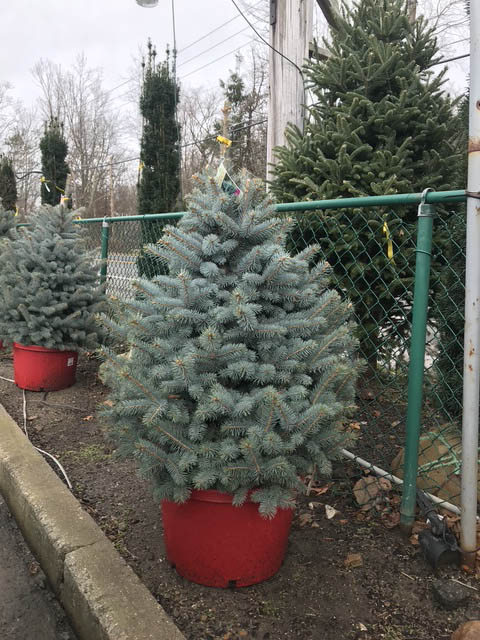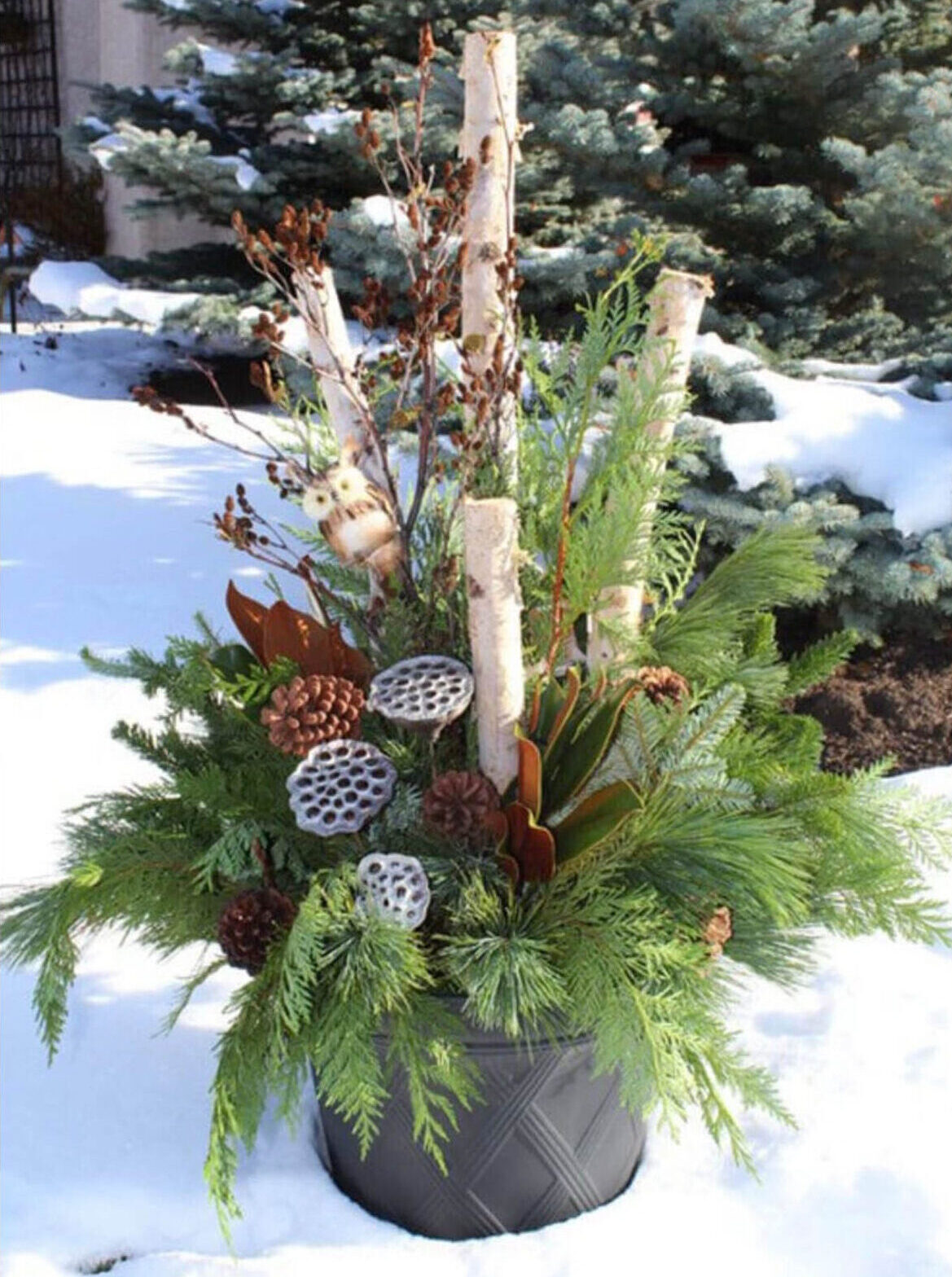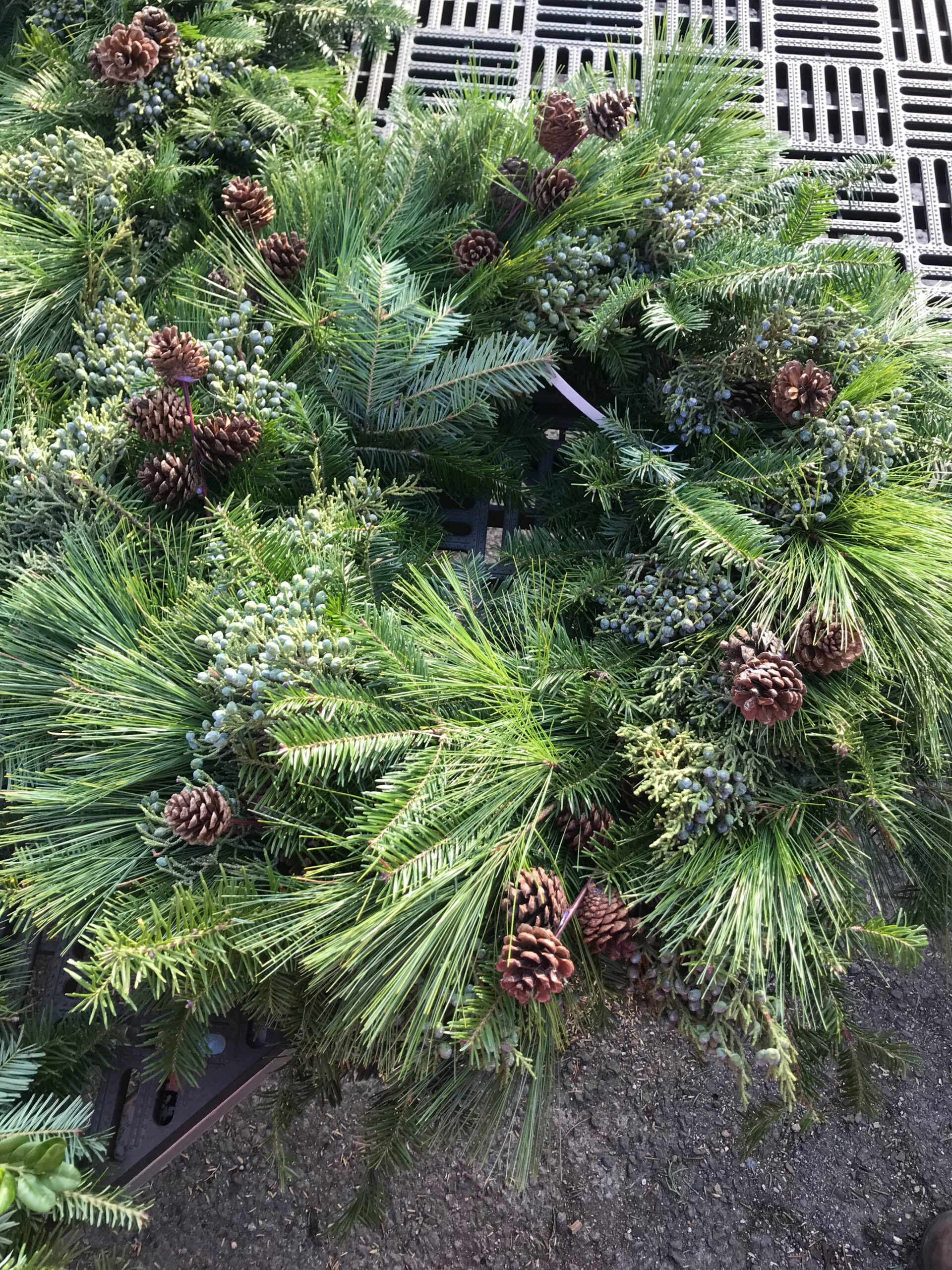It may sound surprising, but cutting down a Christmas tree can actually be greener than buying a fake one. When you choose a tree from a local nursery that replaces each cut tree with a new planting, you’re actually helping, not harming, the environment.
“Trees are a renewable resource,” says Jenn Cipriano, co-owner of Copia Home and Garden in South Salem. “We purchase our trees from farms in New England and New York that plant new trees for each one they cut. And because evergreen trees take about 10 to 15 years to become the average Christmas tree size, while they’re growing, they are sequestering carbon, which helps combat climate change.”
- “Trees are a renewable resource,” says Jenn Cipriano.
- A small Christmas tree inside a red pot.
Understanding your carbon footprint
The best way to determine your impact on the environment is to calculate your carbon footprint, which is the amount of greenhouse gases that you and the item produce. For Christmas trees, that includes what occurs during the manufacturing or growing process, anything the farm or factory does to offset their environmental impact, the materials used to make or grow the tree, the length of travel and how it’s transported (plane, train and/or truck), how you and your new tree get home, and what happens to your tree after the holiday season is over.
Most artificial trees are made from PVC, a plastic laced with toxic additives, and to make them less flammable, manufacturers often coat them in chemical flame retardants, adding another layer of toxins. Add in the carbon emissions from overseas production and shipping, and the environmental toll skyrockets. By contrast, a real tree needs no chemicals, no additives, and if grown on a farm using electric or low-emission equipment, its footprint shrinks even further. The result? An artificial tree can leave a carbon footprint nearly ten times greater than a locally grown, living one.
But there’s a catch: sending your real tree to a landfill means it decomposes without oxygen, therefore releasing methane—a greenhouse gas around 30 times more damaging than carbon dioxide.
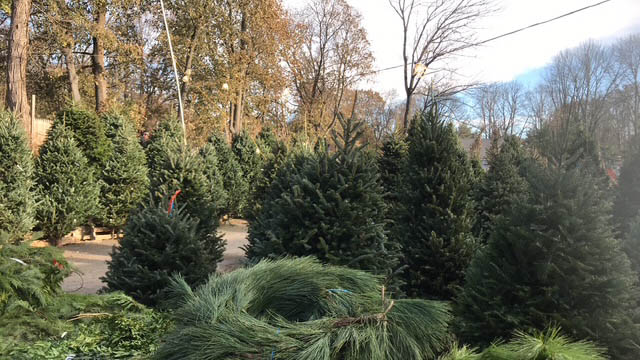
“We purchase our trees from farms in New England and New York that plant new trees for each one they cut. And because evergreen trees take about 10 to 15 years to become the average Christmas tree size, while they’re growing, they are sequestering carbon, which helps combat climate change,” says Jenn Cipriano.
Repurposing your tree
Fortunately, several local programs will collect your tree and bring it to an estuary. But there are also several ways to handle it yourself. “If you cut your tree, you can use the brush to mulch your beds, the logs for firewood, and place the trimmed branches with your forest leaves,” Cipriano explains. “You can also toss the entire tree into the woods, where it will naturally decompose while providing vital nutrients and shelter for a variety of living beings. Or, some of our customers put their tree on their deck or back porch to create a sanctuary for the birds.”
Alternatively, you can purchase live trees that still have the roots attached. But keeping them alive to replant later requires careful planning. “If you’re bringing a potted tree inside your 70-degree house, it will only survive for about two weeks,” Cipriano explains. “After two weeks, you should keep it in the garage for a week so it can acclimate to a cooler temperature, and then it should go back outside. You can either plant it in a pre-dug hole or lean it against your house and pile leaves around the base to protect it for the winter. It will be okay if you plant it in the spring.”
- A Christmas arrangement with pine cones.
- A Christmas wreath with pine cones.
Why stop at trees?
You can also reduce your carbon footprint with your holiday greenery and ornaments. “A great way to save money and be more sustainable is to harvest your own greenery from your yard,” Cipriano suggests. “You can plant winterberry and harvest the stems for your holiday arrangements. It’s a native plant, so it will grow well. Plus, the birds love it, so you’re also providing food for our local ecosystem.”
And finally, there are your lights and ornaments. The good news is that LED Christmas lights are pretty much the norm these days, and even though they’re typically manufactured overseas, you’ll get a longer life out of them, reducing your carbon footprint. “Definitely invest in good quality lights so they last a long time,” Cipriano recommends. “And when they do reach the end of their life, don’t throw them in the trash. There are recycling programs that will take your Christmas lights, dispose of the wires and recycle the rest.”
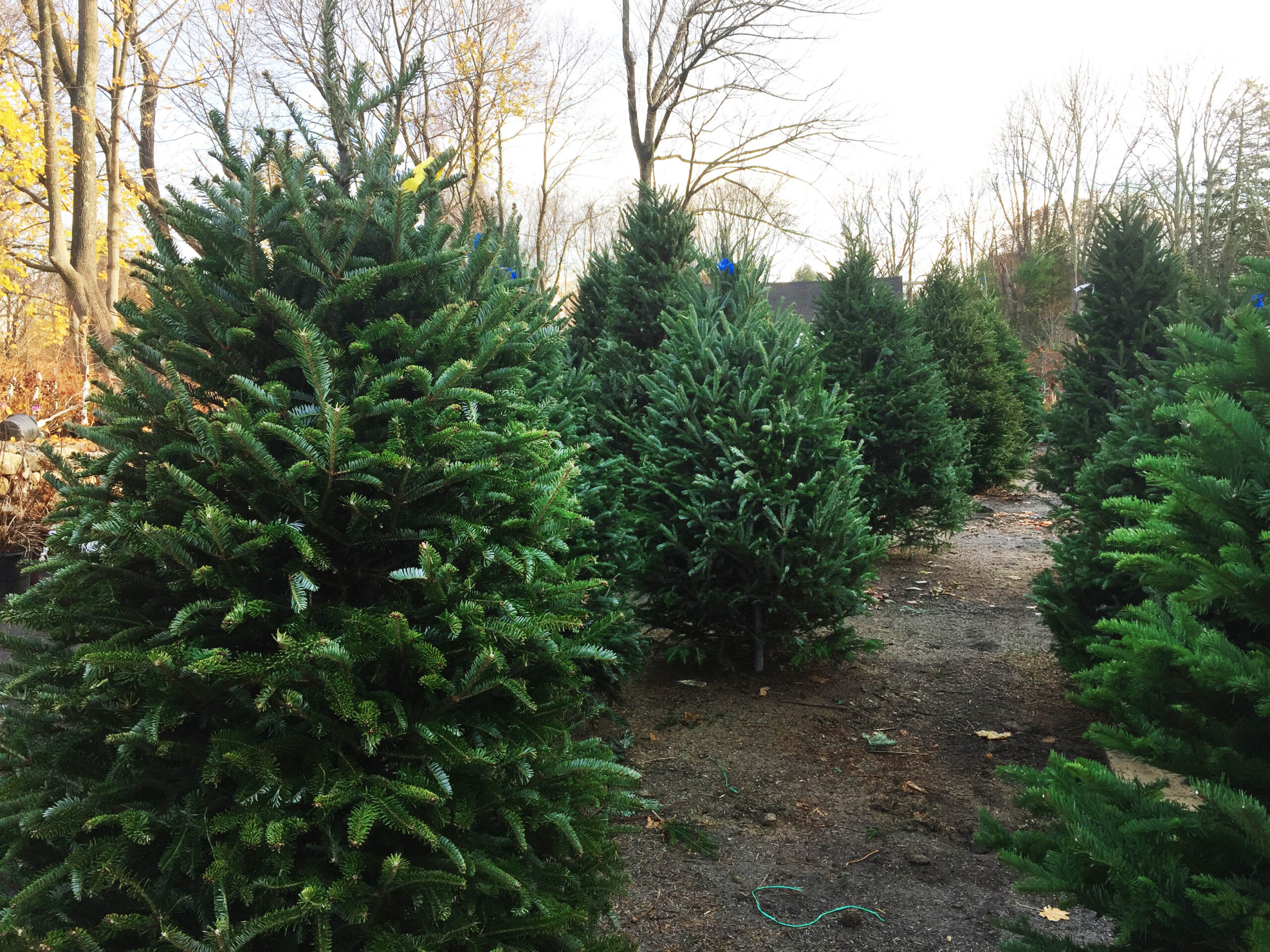
Christmas trees at Copia Home & Garden.
Spruce up your sustainability this holiday season by purchasing your live tree from Copia Home & Garden—each one cut means another planted. Plus, get additional tips on how to recycle or repurpose your tree. 475 Smith Ridge Rd., South Salem; (914) 533-7242; copiahomeandgarden.com.
This partner content was published in the November/December 2025 edition of Connect to Northern Westchester.
The editorial staff at Connect To magazine.




